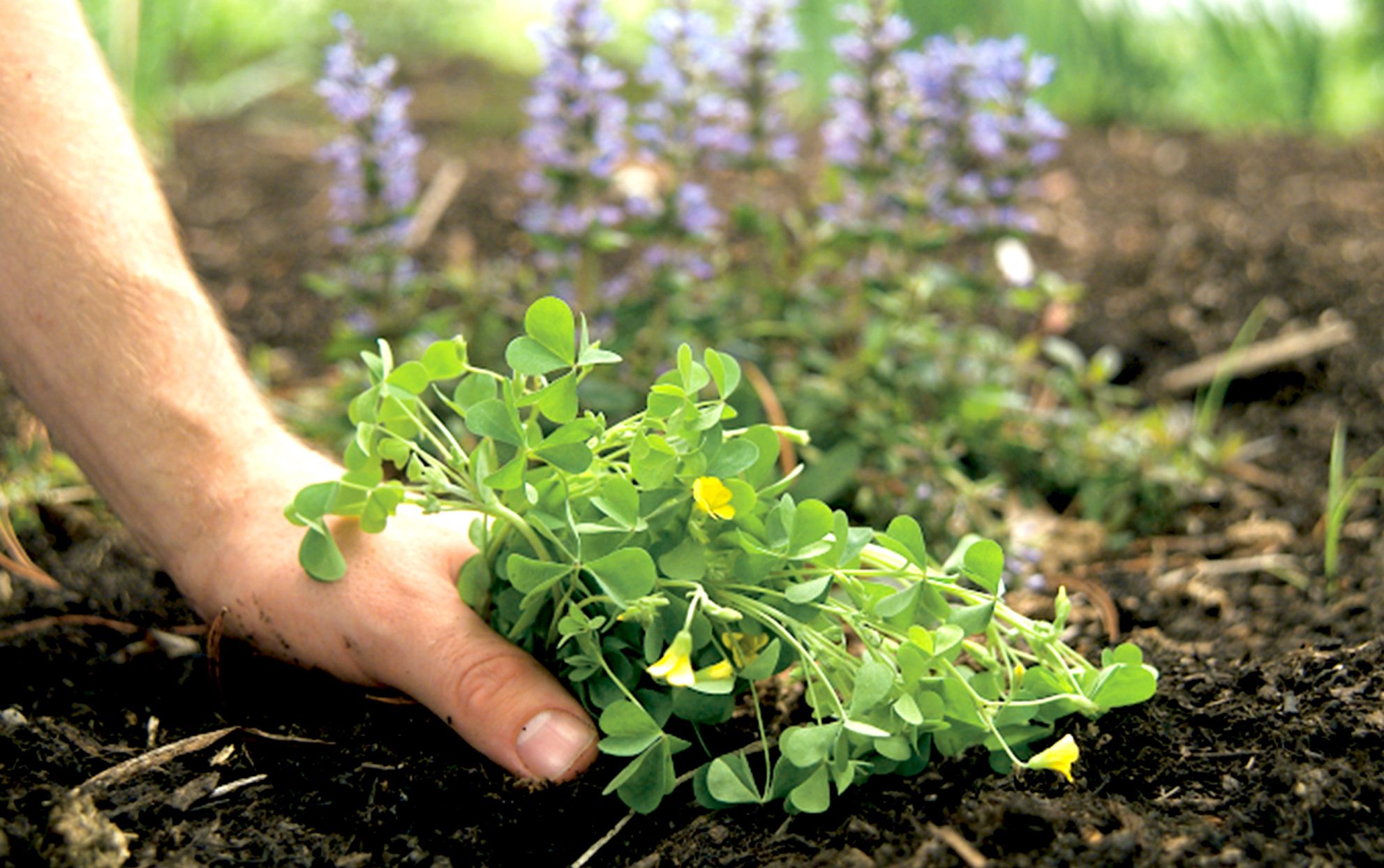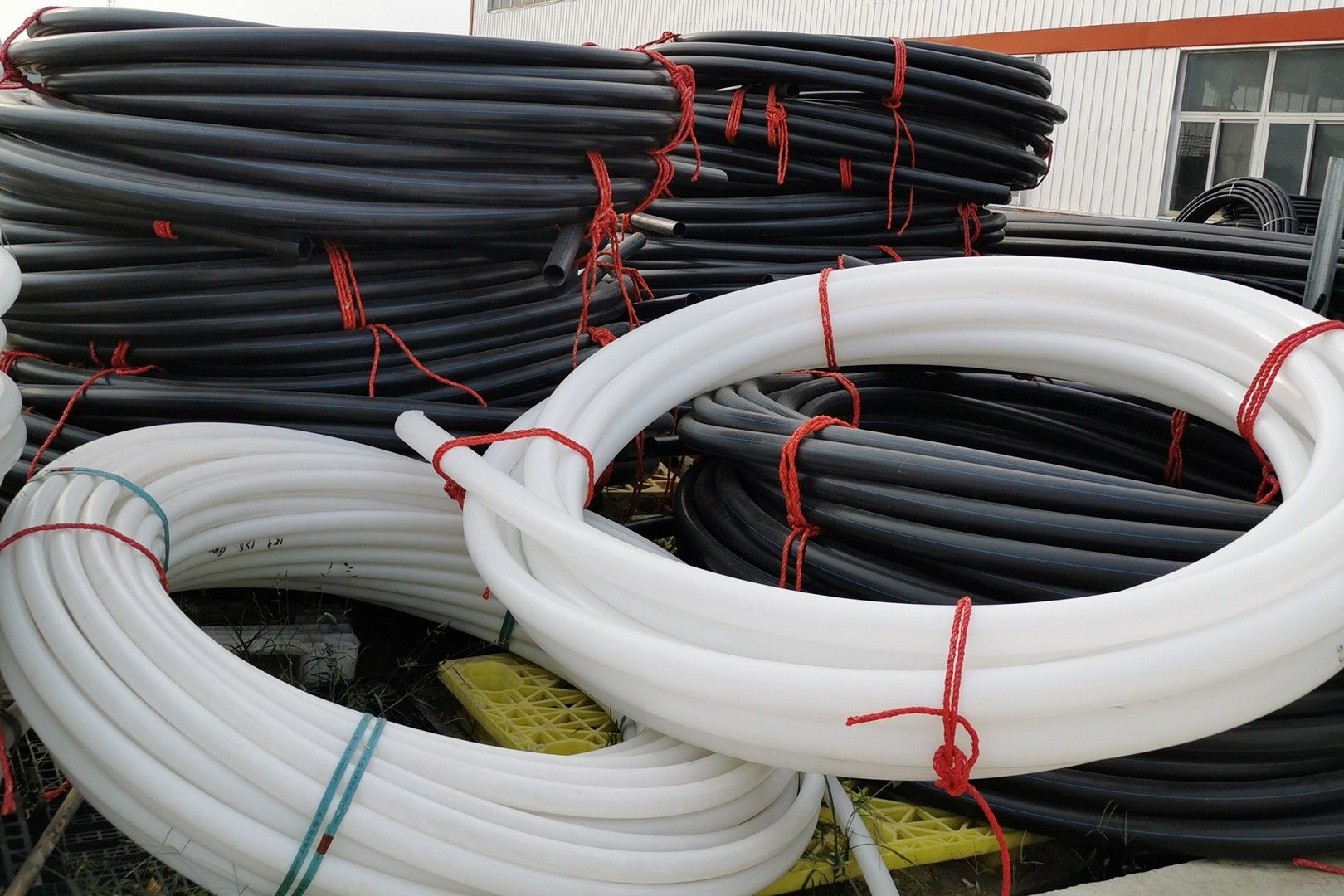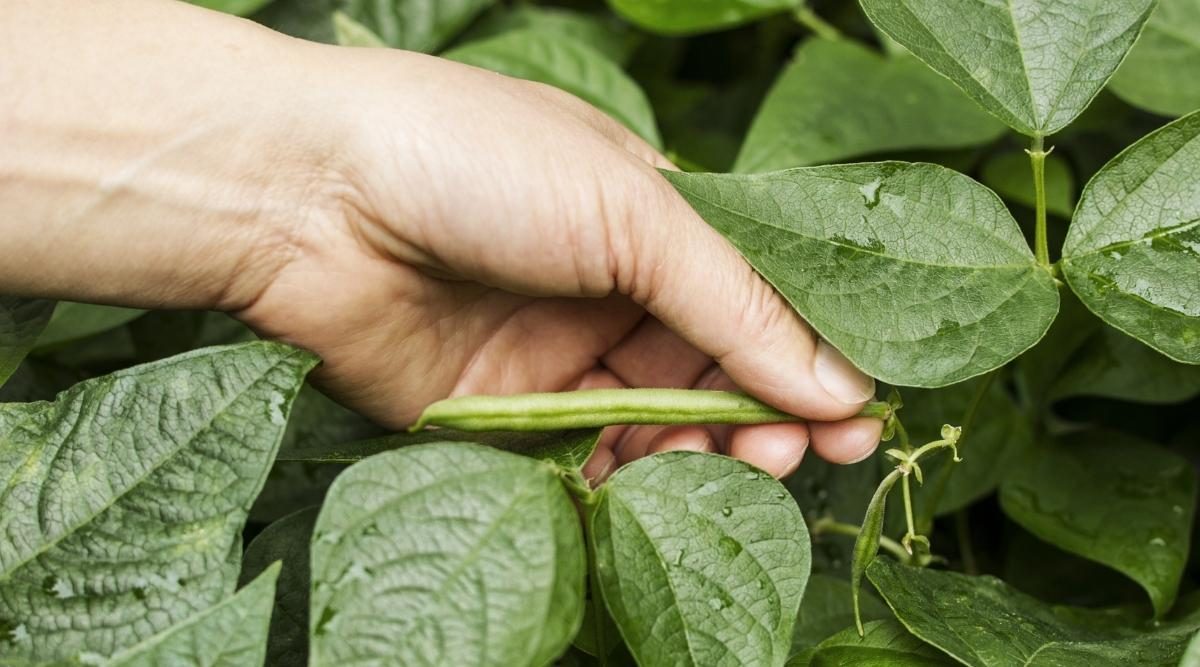Home>Gardening News and Trends>Latest News>What Type Of Water Pollution Is Produced From Chemicals Used To Kill Bugs And Weeds?


Latest News
What Type Of Water Pollution Is Produced From Chemicals Used To Kill Bugs And Weeds?
Modified: January 22, 2024
Stay updated with the latest news on water pollution caused by chemicals used to eliminate bugs and weeds. Learn about the environmental impact and potential solutions. Keep informed with our comprehensive coverage.
(Many of the links in this article redirect to a specific reviewed product. Your purchase of these products through affiliate links helps to generate commission for Chicagolandgardening.com, at no extra cost. Learn more)
Table of Contents
- The Environmental Impact of Chemicals Used to Kill Bugs and Weeds
- Understanding the Diversity of Insecticides and Herbicides
- The Impact of Insecticides on Aquatic Environments
- The Impact of Herbicides on Water Quality and Aquatic Life
- Understanding the Far-Reaching Consequences of Chemical Pollution
- Safeguarding Water Quality and Ecosystem Health
Introduction
The Environmental Impact of Chemicals Used to Kill Bugs and Weeds
When it comes to maintaining agricultural productivity and managing pests, the use of chemicals to kill bugs and weeds has become a common practice. While these chemicals effectively control unwanted insects and plants, they also pose a significant threat to the environment, particularly in terms of water pollution. In this article, we will explore the various types of water pollution that result from the use of insecticides and herbicides, shedding light on their detrimental effects on aquatic ecosystems and human health.
The widespread application of insecticides and herbicides in agricultural and residential settings has led to the contamination of water bodies, including rivers, lakes, and groundwater reservoirs. Understanding the specific types of chemicals used to combat bugs and weeds is crucial in comprehending the nature and extent of water pollution caused by these substances. By delving into the distinct characteristics of insecticides and herbicides, we can gain insight into their respective pathways of contamination and the resulting environmental consequences.
As we delve into the intricate web of interactions between chemicals and the aquatic environment, it becomes evident that the repercussions of water pollution extend far beyond the initial application of these substances. By examining the impact on aquatic organisms and the broader ecosystem, we can grasp the urgency of addressing this environmental challenge. Through this exploration, we aim to raise awareness about the critical need for sustainable and eco-friendly alternatives to conventional bug and weed control methods.
Types of Chemicals Used to Kill Bugs and Weeds
Understanding the Diversity of Insecticides and Herbicides
In the realm of pest management and weed control, a diverse array of chemicals is employed to target specific organisms and achieve effective suppression. Insecticides, designed to combat insect pests, encompass various chemical classes, including organophosphates, carbamates, pyrethroids, and neonicotinoids. Each class exhibits distinct modes of action and persistence in the environment, influencing the extent of their impact on water bodies and aquatic life.
Herbicides, on the other hand, are formulated to control unwanted vegetation and weeds. These chemicals fall into different categories based on their target plants and mechanisms of action. Selective herbicides, such as 2,4-D and dicamba, target specific types of plants, while non-selective herbicides like glyphosate are designed to eradicate a broad spectrum of vegetation. Understanding the properties and behaviors of these herbicides is essential in comprehending their potential to contaminate water sources and disrupt aquatic ecosystems.
By examining the diverse chemical compositions and functions of insecticides and herbicides, we can gain a deeper understanding of the distinct pathways through which these substances enter water bodies. Whether through runoff from treated agricultural fields, leaching into groundwater, or direct application near aquatic habitats, the transport of these chemicals into water systems poses a significant risk to the ecological balance and water quality.
Water Pollution from Insecticides
The Impact of Insecticides on Aquatic Environments
Insecticides, while crucial for controlling insect pests in agricultural and urban settings, have been linked to significant water pollution issues. The application of these chemicals can result in runoff from fields, leading to the contamination of surface water bodies such as rivers, streams, and lakes. Additionally, insecticides have the potential to leach into groundwater, further exacerbating the pollution of drinking water sources and aquatic ecosystems.
One of the primary concerns associated with insecticide pollution is the detrimental effect on aquatic organisms. Aquatic insects, fish, and other wildlife are particularly vulnerable to the toxic effects of insecticides, which can disrupt their physiological functions and reproductive cycles. Moreover, the accumulation of insecticides in the food chain can lead to bioaccumulation and biomagnification, posing long-term threats to the health of predator species and, ultimately, human consumers.
Furthermore, certain insecticides, such as neonicotinoids, have been implicated in the decline of pollinator populations, including bees and butterflies. The contamination of water sources with these chemicals can contribute to the widespread ecological impact, affecting not only aquatic ecosystems but also terrestrial habitats reliant on pollination services.
Addressing the issue of water pollution from insecticides necessitates a comprehensive approach that considers the ecological interconnectedness of terrestrial and aquatic environments. By implementing integrated pest management strategies, promoting the use of alternative pest control methods, and enhancing regulatory measures to minimize insecticide runoff, we can mitigate the adverse effects of these chemicals on water quality and safeguard the health of aquatic ecosystems.
Water Pollution from Herbicides
The Impact of Herbicides on Water Quality and Aquatic Life
Herbicides, commonly used to manage unwanted vegetation and weeds, contribute to water pollution through various pathways, posing significant challenges to aquatic ecosystems and human health. The application of herbicides in agricultural, residential, and industrial settings can result in the contamination of surface water and groundwater, leading to adverse effects on water quality and aquatic life.
One of the primary concerns associated with herbicide pollution is the potential for runoff from treated areas to enter water bodies. This runoff can transport herbicides such as glyphosate, atrazine, and 2,4-D into rivers, lakes, and streams, impacting the ecological balance and biodiversity of aquatic habitats. Additionally, the persistence of certain herbicides in the environment can lead to long-term contamination of water sources, posing challenges for water treatment facilities and potable water supplies.
The impact of herbicides on aquatic organisms is a critical aspect of water pollution. Fish, amphibians, and aquatic plants are particularly vulnerable to the toxic effects of herbicides, which can disrupt their growth, reproduction, and overall health. Furthermore, the presence of herbicides in water bodies can lead to the degradation of habitat quality, affecting the resilience of aquatic ecosystems and the services they provide.
Efforts to mitigate water pollution from herbicides involve a multi-faceted approach, encompassing measures such as buffer zones near water bodies, the promotion of eco-friendly weed management practices, and the development of herbicide formulations with reduced environmental persistence. By fostering awareness of the potential impact of herbicides on water quality and advocating for sustainable land management practices, we can work towards minimizing the adverse effects of herbicide pollution on aquatic ecosystems and safeguarding the integrity of water resources.
Impact on Ecosystems
Understanding the Far-Reaching Consequences of Chemical Pollution
The use of insecticides and herbicides to control pests and weeds has profound implications for the stability and resilience of ecosystems, particularly those associated with aquatic environments. The impact of chemical pollution on ecosystems extends beyond the immediate effects on targeted organisms, encompassing broader ecological dynamics and the interconnectedness of terrestrial and aquatic habitats.
One of the primary ecological consequences of chemical pollution is the disruption of food webs and trophic interactions within aquatic ecosystems. Insecticides and herbicides can affect the abundance and diversity of aquatic organisms, leading to imbalances in predator-prey relationships and the overall functioning of ecological communities. This disruption can have cascading effects on ecosystem dynamics, influencing nutrient cycling, energy flow, and the provision of ecosystem services.
Furthermore, the persistence of insecticides and herbicides in water bodies can impact the composition and structure of aquatic habitats, leading to shifts in community assemblages and the degradation of biodiversity. Aquatic plants, invertebrates, and fish populations may experience declines or alterations in their distribution patterns, affecting the resilience of ecosystems to environmental stressors and disturbances.
The ecological impact of chemical pollution also extends to the broader landscape, encompassing the interactions between terrestrial and aquatic ecosystems. Runoff and leaching of insecticides and herbicides from treated areas can lead to the contamination of downstream water bodies, affecting not only aquatic organisms but also terrestrial wildlife and habitats. Moreover, the transport of these chemicals through interconnected water systems can result in far-reaching consequences for regional and global biodiversity.
Addressing the impact of chemical pollution on ecosystems necessitates a holistic and proactive approach that integrates sustainable land management practices, the promotion of biodiversity conservation, and the adoption of ecologically sound pest and weed control strategies. By recognizing the intricate web of ecological interactions and the vulnerabilities of aquatic ecosystems to chemical pollution, we can work towards fostering resilient and healthy environments that support the well-being of diverse species and the services they provide to society.
Conclusion
Safeguarding Water Quality and Ecosystem Health
The pervasive use of chemicals to combat bugs and weeds has given rise to significant challenges pertaining to water pollution and ecosystem integrity. The diverse array of insecticides and herbicides utilized in agricultural, residential, and industrial contexts has led to the contamination of water bodies, posing threats to aquatic organisms, human health, and the broader ecological balance. As we navigate the complexities of chemical pollution, it is imperative to recognize the far-reaching implications of these substances and prioritize sustainable approaches to pest and weed management.
By understanding the distinct pathways through which insecticides and herbicides enter water systems, we can develop targeted strategies to minimize their impact on water quality. Implementing best management practices, such as buffer zones, integrated pest management, and the promotion of eco-friendly alternatives, can mitigate the transport of chemicals into aquatic environments, fostering a healthier coexistence between human activities and natural ecosystems.
Furthermore, raising awareness about the ecological consequences of chemical pollution is essential in fostering a collective commitment to environmental stewardship. Engaging in education and outreach initiatives that highlight the potential risks of insecticides and herbicides to aquatic ecosystems can empower communities, policymakers, and stakeholders to advocate for sustainable land management practices and regulatory measures that prioritize environmental conservation.
As we strive to safeguard water quality and ecosystem health, it is crucial to embrace a proactive and collaborative approach that transcends conventional paradigms of pest and weed control. By integrating ecological principles, innovative technologies, and community engagement, we can work towards a future where the coexistence of agriculture, urban landscapes, and natural habitats is characterized by harmony and resilience.
In essence, the journey towards mitigating water pollution from chemicals used to kill bugs and weeds requires a commitment to holistic environmental stewardship, scientific innovation, and a profound respect for the intricate web of life that thrives within and around water bodies. Through concerted efforts to minimize the impact of insecticides and herbicides on aquatic ecosystems, we can pave the way for a sustainable and vibrant coexistence between human activities and the natural world.





